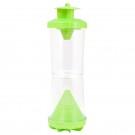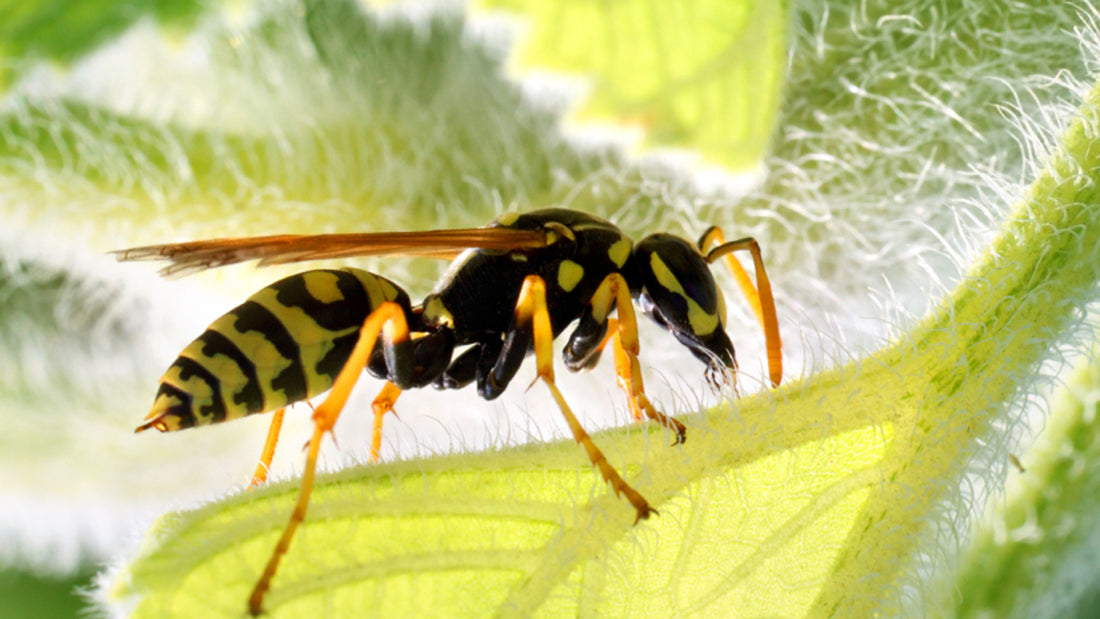Wasps Are Common Pests in Many Places
"Social wasps" sound like party crashers, don't they? The partying gang includes hornets and the paper wasps, along with yellowjackets. Did you know that a yellowjacket is actually a yellowjacket wasp? Some people in Nevada County call them "meat bees". All of us call them "unwelcome" when we're eating outdoors. You need some kind of bouncer to keep these social wasps away from your garden and outdoor parties.
Tricia shows you How to Get Rid of Wasps in our latest video. Instead of picking up a can of conventional pesticide (which could kill bees and other pollinators), try the organic gardener's method of Integrated Pest Management. Look at the social structure and life patterns of the social wasps and see if you can disrupt a process here or there, to make them think your garden is not a paradise for wasps, after all.
What's so social about social wasps?
They live in groups, but only during warm weather. Most of the wasps die when the fall temperatures drop. Some females over-winter and become queens of new nests in early spring. As the larvae grow in the new nest, workers are out procuring protein by devouring pest worms and other insects -- so they can actually be helping organic gardeners at that time. The end of summer is when the worlds of wasps and humans really collide, as the wasps turn scavenger and take a keen interest in human picnic food. Yellowjackets are the primary wasps in California and paper wasps are more common outside California.
Make it hard for wasps to move in with you for the summer

Nobody wants a difficult neighbor, including wasps. If they see a wasp nest in place they will move on and look for another location. Fool them by hanging a Wasp deterrent, that looks like a wasp nest. Note that mud wasps aren't considered social wasps. They rarely sting and don't defend their nests. If they have daubed themselves a dwelling under your eaves you can easily remove it in the winter.
How to evict wasps
In the spring, keep a lookout for new wasp or yellowjacket nests. If the nest looks small you can try a natural spray like Ecosmart. Apply the spray directly on the nest where it will coat, penetrate, and destroy the nest itself. Ecosmart spray is exempt from EPA registration and formulated with active ingredients of 1.00% peppermint oil; 2-Phenethy Propionate 0.50%. The concentrated blast of natural plant oils also overwhelms the insects' senses, rendering them helpless instantly and dead within seconds. It's labeled for paper wasp nests, bald-faced hornet, European hornet or aerial yellowjacket nests, and underground yellowjacket nests. If you missed the early stage of spring nests, by late summer you might have a large nest, above ground or underground. If that's true, you should consult a professional exterminator or use one of these pest control products. The last thing you want is a group of defensive wasps or yellowjackets angrily flying around your yard. UC Davis says an underground yellowjacket nest can house well over 1,500 insects.
Keep your garden from being a party site for social wasps

If the wasps are already established in your summer garden, you can divert them with an invitation to another party. Hang some lures or traps in places between their nests and the spots where you (and all your enticing food) are relaxing outdoors. A trap that is more utilitarian in appearance is the W-H-Y Trap. It's your garden and you don't have to let the wasps share it with you.


1 comment
From my research, trapping meat bee workers, causes the queen to lay more eggs and make more bees. So trapping doesn’t really help.